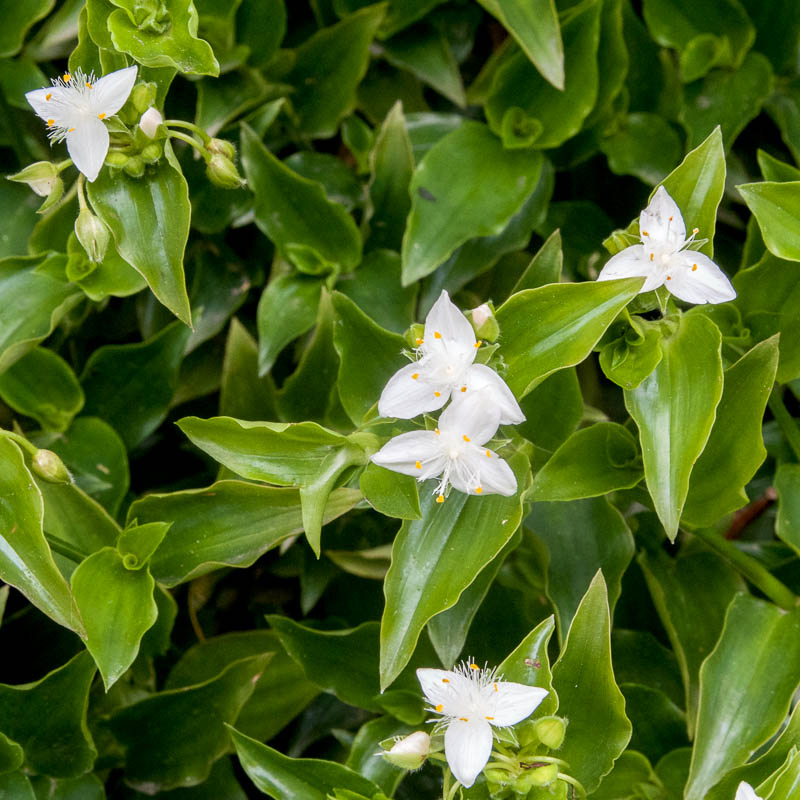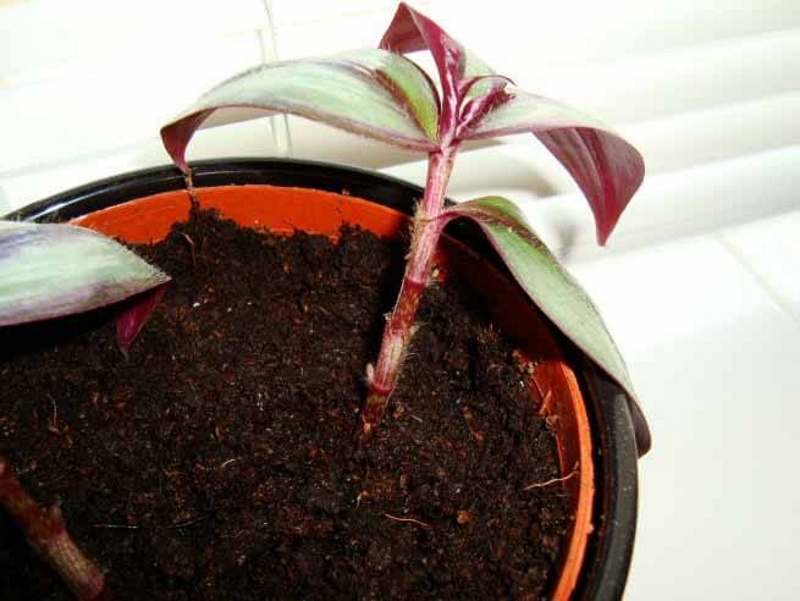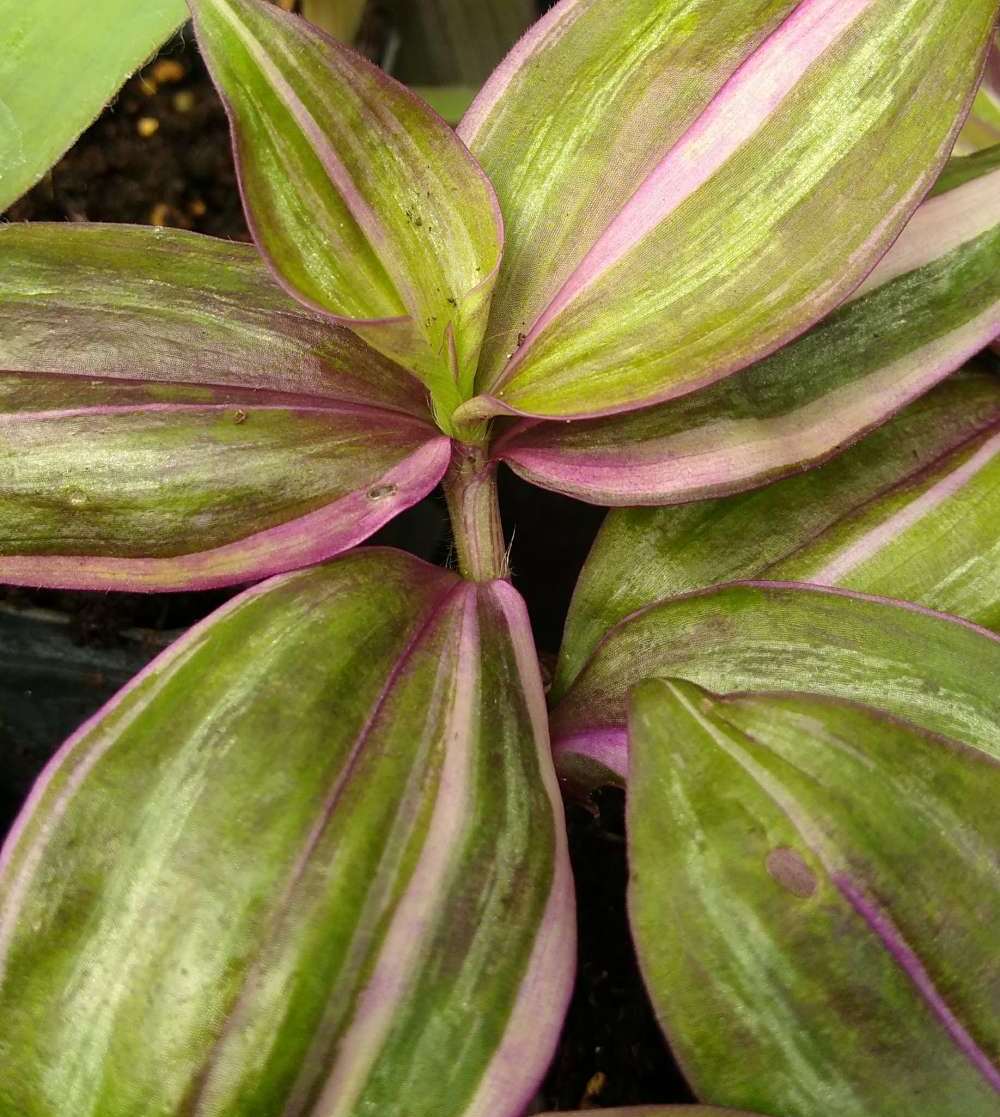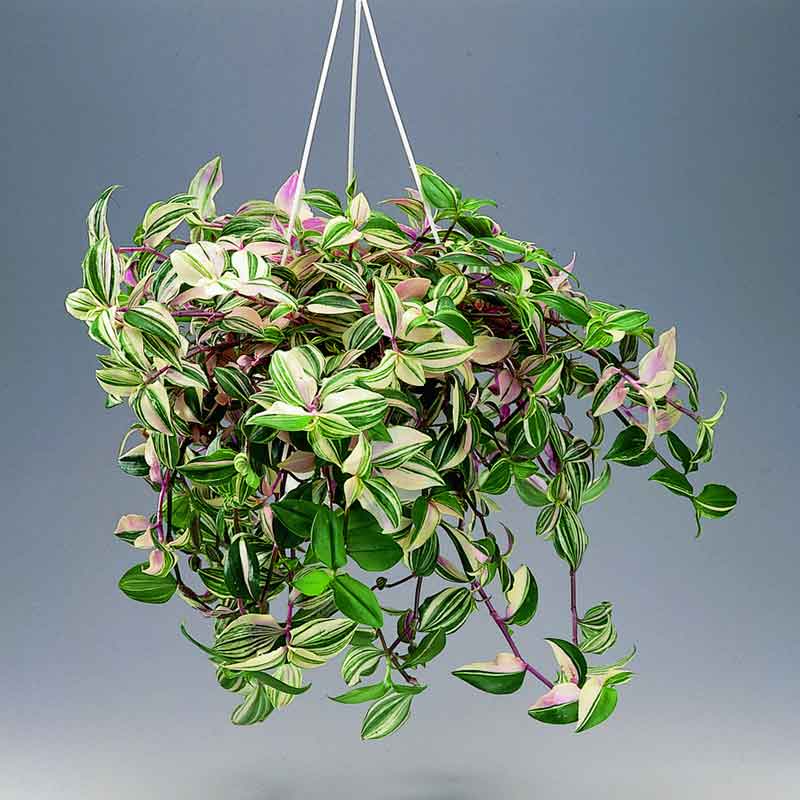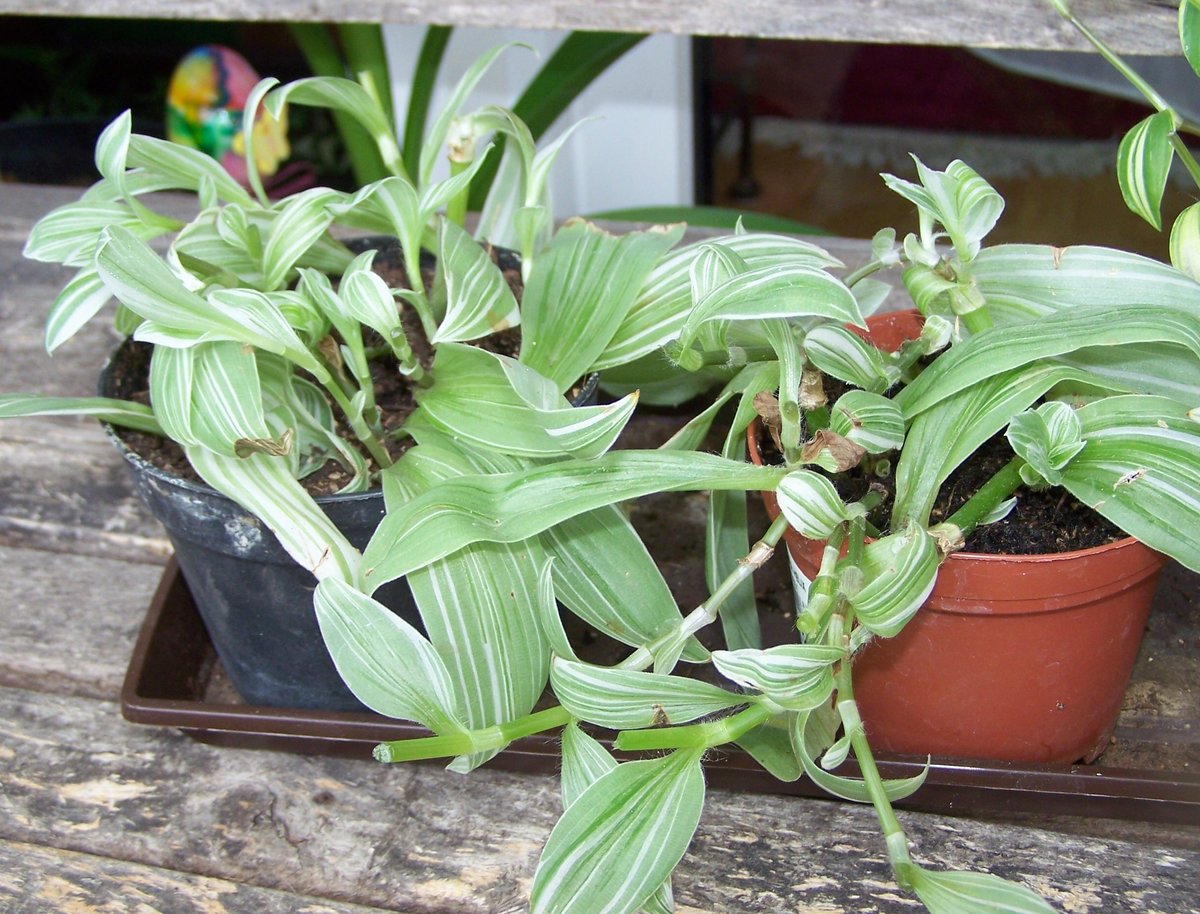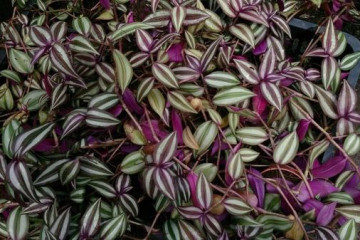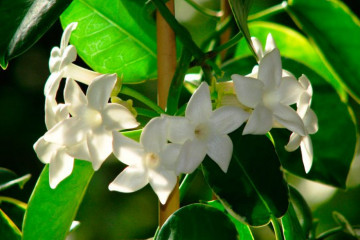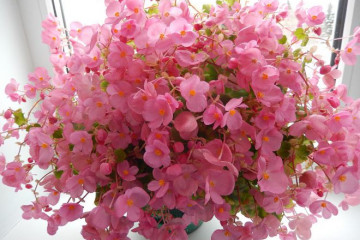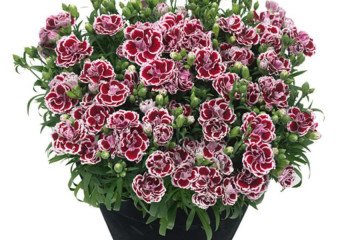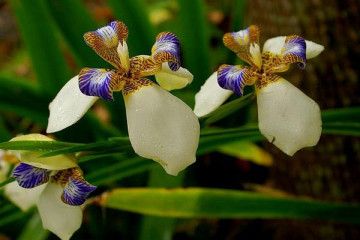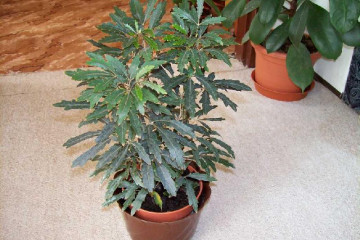Tradescantia - home care
Content:
Green Tradescantia is a herbaceous plant of the Kommelin family, native to North America. The family includes about 30 species, among which the most popular is variegated tradescantia. Perennial fast-growing shoots in the form of a stem with leaves of various shapes and colors, decoratively hanging from a flowerpot, end in a lush inflorescence. Indoor Tradescantia is undemanding to grow and care for, thanks to which it decorates the windows of many apartments and institutions for a long time.
Tradescantia: home care
Despite the unpretentiousness of the culture, in order to grow a beautiful lush flower, it is necessary to provide competent care for the Tradescantia. White flowers do not last long, only one day, but due to the large number of buds in the inflorescence, which bloom one after another, the impression of a long flowering is created. You won't be able to see flowers without proper care.
Temperature and lighting
Tradescantia white-flowered care is not required, although it can grow in conditions with low temperatures from 6 ° C. Usually the flower grows both warm and cool, but the room should not be colder than 10-12 ° C.
Watering and humidity
Tradescantia requires compliance with watering rules, which vary depending on the season, humidity and room temperature. In summer, especially on hot days, the flower is watered once every 2 days; at room temperature in winter, once a week is enough. The signal for watering is the drying surface of the soil in the pot. The earth needs to be kept moist, but free of stagnant water.
Tradescantia is a tropical plant, but does not require constant spraying of leaves, however, it grows better in a room with high humidity. In the cold season, when the heating season begins, and, therefore, the air in the room becomes very dry, it is necessary to spray the leaves of the flower a couple of times a day. Tradescantia care in the form of irrigation is recommended with settled water.
Lighting and location selection
Tradescantia can grow both in a bright place and in a shaded one, although in the first case it will contribute to rapid growth. The choice of the place where the flower will grow should be approached responsibly, especially if you grow variegated Tradescantia. Leaving and enough light will brighten the color of the leaves.
Flower propagation
Growing purple Tradescantia, care and reproduction at home is carried out from early spring to late autumn by cuttings or dividing the bush. In winter, due to the very slow germination of roots, flower reproduction is not recommended. Cut off the top of the stem so that the stalk has several good internodes and does not exceed 15 cm in length, then place it in a container with water.After a couple of days, when the roots appear, the plant is transplanted into a pot of a suitable volume with specially prepared soil and watered abundantly.
Reproduction of small-leaved tradescantia, care is carried out as follows: they take it out of the pot along with a piece of earth and carefully divide the rhizome into several parts, trying not to damage it. Then the plant must be planted in a pot with soil prepared in the same way as for cuttings.
Tradescantia pests and diseases
Preventing the appearance of pests is easier than getting rid of them, so you need to monitor the symptoms of the appearance: lethargy of the plant, drying leaves, loss of attractiveness of the appearance of Tradescantia.
Caring for a diseased plant should be started immediately.
| Pest | How does it manifest | Remedy |
| Aphid | Slimy plaque forms on young shoots, destroying them, and leaves that curl up and fade. | Spraying the plant with insecticidal agents or a solution of laundry soap. Repeat the treatment in a couple of days. |
| Thrips | Small black spots appear on the underside of the leaf, causing colorless or yellow spots on the leaves that dry out. | Spraying with insecticidal agents. Laundry soap solution and greenhouse effect will help early on. For treatment, the plant is placed in water with a solution of the product and covered with a film. Humidify the air for prevention. |
| Spider mite | It starts in very dry air and affects the plant. | Spraying with insecticidal agents several times. Repeat the course in 1.5 weeks. Prevention - air humidification. |
| Plant disease | Possible reason | Remedy |
| Small, faded leaves, loss of patterns | Lack of light | Move the plant to a brighter spot. |
| The tips of the leaves darken and dry out | Dry air | Spray regularly, put a jar of water next to the pot, and place moistened expanded clay in the pan. Keep away from radiators in winter. |
| Softening shoots at the base, darkening of the trunk | Stagnant water causing stem rot | Cut off surviving shoots, root and germinate again. |
| Slow growth, long empty stems | Lack of food, light, or moisture | Feed the plant, move it to a bright place and normalize watering. |
| Yellow spots on leaves and sluggish stems | Dry soil | Improve watering. |
Features of caring for room ampel tradescantia
Ampel flowers are grown in hanging flowerpots and pots. Of the many plants, Tradescantia, the ampelous bride, looks the most beautiful in them. They are kept at home in cold weather, and in the summer they can be used to decorate gazebos, balconies and terraces, provided the necessary conditions are met - to provide the plant with partial shade and protect it from drafts. Hanging flower care consists of watering, feeding and pruning the plants.
How to feed Tradescantia at home
Tradescantia is characterized by continuous growth, clinging to roots that sprout from any internode touching the soil, it strengthens and gives new shoots. To stimulate the intensity of growth and abundance of flowering, you need to know how to care for Tradescantia. It is enough to feed it once every 2 weeks and only during the warm period (spring-summer). For Tradescantia with a monochromatic leaf color, the best top dressing will be the alternate introduction of organic substances and mineral additives.
Watering and feeding
Plants with a bright pattern on the leaves, including striped tradescantia, need to be fed with complex mineral fertilizers, the introduction of organic additives will lead to a loss of decorativeness, to a fading of color.
Top dressing during flowering
Along with the main care - applying fertilizers to the ground, Tradescantia is additionally fed by spraying the leaves.
Reasons for extra care:
- increased acidity of the soil;
- lack of some trace elements;
- flowering period of tradescantia;
- care associated with the inability to consume fertilizers from the soil.
Tradescantia transplant
Plant transplantation is associated with a violation of the earthen coma, the removal of dead roots and weak shoots. Transplanting is especially important for young plants; it is carried out every year.
Planting and transplanting into new soil
Tradescantia should be transplanted every 2-3 years, and if the plant is sick, it can be done more often. You can prepare a soil substrate for the shoots yourself or buy a ready-made one. Any general purpose primer sold in stores will work for Tradescantia. Planting, caring for a plant in the soil itself is no different from the actions in the purchased one.
Soil composition and pot selection
Adhering to the proportion: earth, peat, sand 2: 1: 1, for making your own soil, any material that allows water to pass through is suitable as a drainage layer - sand, gravel, expanded clay, poured into a layer of 2 cm to eliminate excess moisture during irrigation.
Transplant rules and pruning
Step-by-step algorithm on how to care for Tradescantia during a transplant:
- Pick up a wide and shallow pot, prepare the soil.
- Remove the plant from the pot, shake off the soil from the roots, untangling them.
- Remove old, dead roots.
- Plant in a pot, gradually pouring in the soil and compacting it.
- Water abundantly.
In the spring, in order for Tradescantia to bloom, care should be done in the form of pruning dry and diseased shoots, as well as pinching for better bushiness.
Maintaining the beauty of the plant with regular care and transplanting a flower will allow not only to grow a living decoration in the house, but also to try yourself as an interior designer. In any case, a neat bush on the windowsill will certainly delight the eye.
